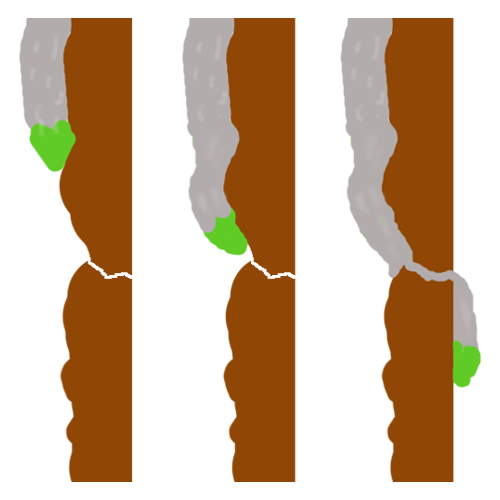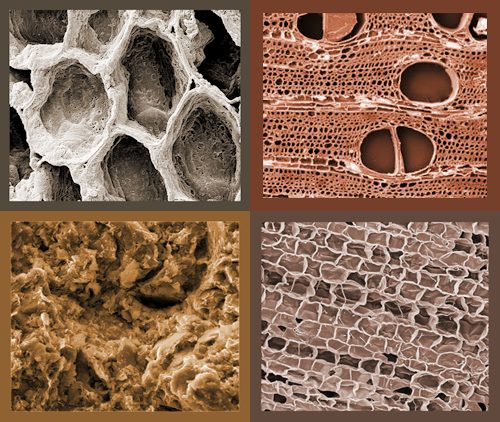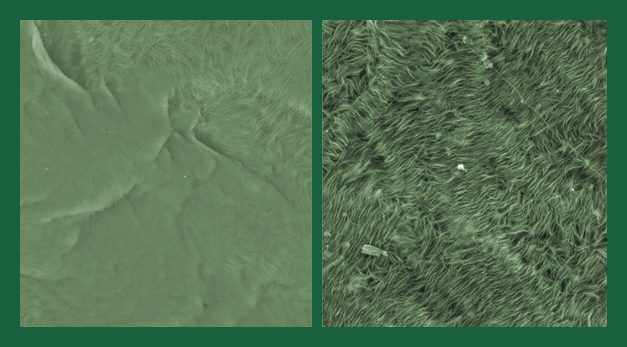Did you ever wonder how an orchid’s roots can travel right through a seemingly solid cork mount, aren’t bothered at all by the abrasive surface of bark chips or clay aggregates, or how they attach themselves so well to flower pots and slabs, no matter how smooth they may be?
The answer lies in the fact that the roots don’t “move” at all, but grow and fill in spaces on the contour of the surface with newly-created root cells instead, extending the length and girth of the root as it goes. The following graphic is a crude depiction of the process.

Orchid roots cling to surfaces by matching the contours of the surface they are in contact with, and that can be quite extensive. Below are some scanning electron micrographs of common substrate materials:

By having cells grow into those many ridges, valleys and crevices, the orchid gets a pretty sturdy “grip” on the substrate to secure itself. Even plastic flower pots, as smooth as they are, provide some texture for the cells to “grab”. The image below shows a plastic flower pot surface as-molded on the left, and after aging a few months in the greenhouse, on the right.

